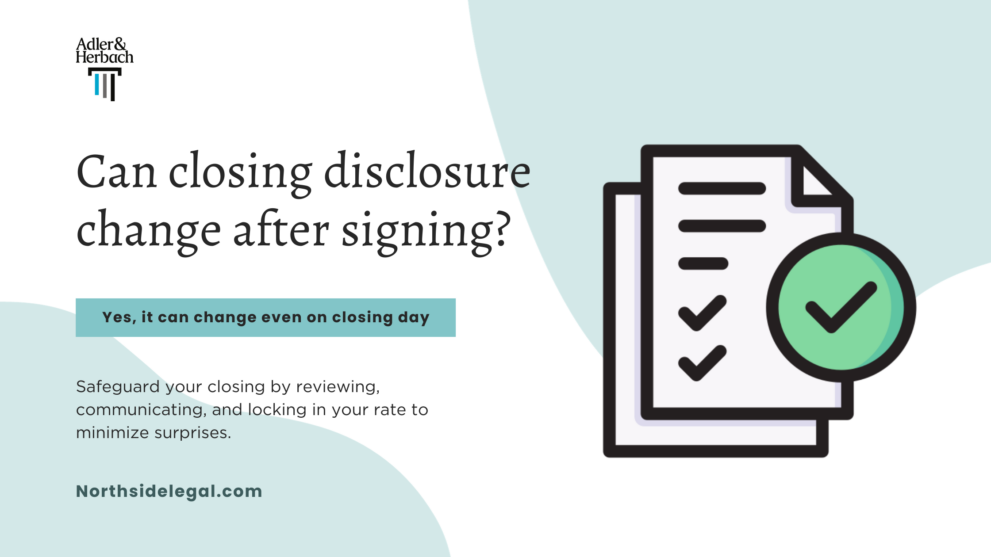When you reach the final stages of closing on a mortgage loan and home purchase, the lender is required to provide a detailed Closing Disclosure form outlining all the final loan terms, fees, costs and other details associated with the transaction.
Buyers will typically sign the Closing Disclosure to formally acknowledge receipt during the mandated 3-day review period before closing. But after a buyer has already signed the initial Closing Disclosure, can changes still occur on the statement before the actual closing? Are any cost fluctuations or adjustments still possible at this stage?
Can closing disclosure change after signing?
Yes, the Closing Disclosure form can change after signing. These changes can be due to adjustments in prorations, title fees, or other costs. If there are significant changes, a new disclosure will be required and the closing may be delayed. However, as a buyer, you have options to protect your interests, such as locking in your interest rate or choosing not to close if you are uncomfortable with the changes. The lender is also limited in adjusting certain fees and amounts after the initial disclosure.

Key points on potential Closing Disclosure changes post-signing
- It is most common that only minor changes occur, typically due to slight recalculations of tax prorations, prepaid interest, escrow account adjustments or minor modifications in the final loan amount after the last underwriting review.
- Substantive changes are less likely but can certainly still happen even after initial signing. Any significant alterations do require the lender to issue an updated Closing Disclosure with an additional mandated 3-day waiting period before closing.
- Lenders strive to provide the most accurate Closing Disclosure estimate possible to the buyer on the first version issued to minimize surprises, anxiousness or need for delays down the road. But unforeseeable events can affect figures.
- The buyer does have the option to request rate lock to lock in the interest rate and associated prepaid costs used on the initial Disclosure to maintain consistency if they wish. This safeguards against rate-driven changes.
- Sudden credit report changes or title issues uncovered shortly before closing could necessitate an updated Disclosure and documentation along with closing delays. It’s not common but can happen.
- As the buyer, you always reserve the right to decline to close the transaction if uncomfortable with any Closing Disclosure changes that arise or costs significantly exceeding original estimates or agreements made.
To Avoid Surprises or Confusion on Closing Day:
- Review all provided fees, loan costs and other Closing Disclosure details extensively upfront before initially signing.
- Request explanations from the lender early on about any unclear charges or noticeably escalating costs above prior estimates.
- Lock in your interest rate early, with a buffer window prior to closing sufficient to minimize chances of last-minute rate fluctuations impacting prepaid amounts.
- Maintain constant open communication with your lender about any issues potentially requiring an update so you stay informed.
Learn more about
In Summary
Being proactive when first reviewing the Closing Disclosure, asking questions, and locking your rate can help minimize the odds of any unwelcome changes arising down the road before closing. But buyers should still be aware that some minor fluctuations are possible in the final days leading up to settlement, and be prepared for that possibility.


